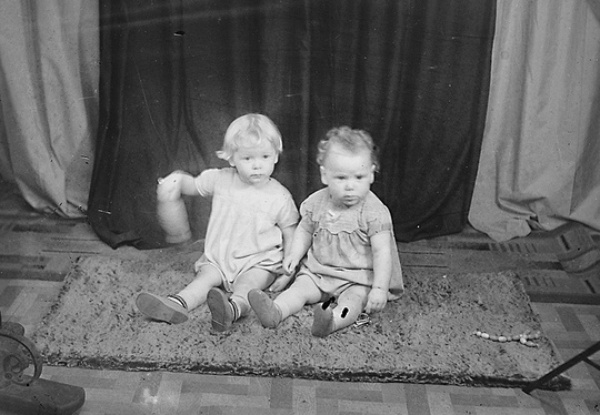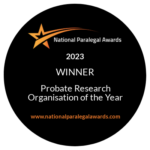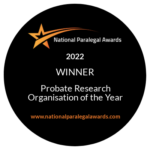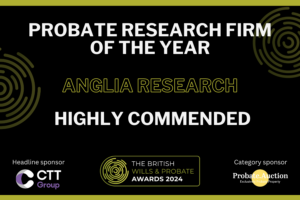Relative success?

What happens when a probate researcher spots one of their own relatives’ names on the bona vacantia list? Case manager Terry Bridger knows the answer, because it once happened to her.
 One thing that people often ask is whether we probate genealogists are ever tempted to look for estates of our own kin when we access government listings. It is not something that we generally have time for, but occasionally fate brings an entry to our attention, purely because those of us who are hobby genealogists in our free time (yes, some of us are incurable family historians) are attuned to any variation of our family names as we skim through lists.
One thing that people often ask is whether we probate genealogists are ever tempted to look for estates of our own kin when we access government listings. It is not something that we generally have time for, but occasionally fate brings an entry to our attention, purely because those of us who are hobby genealogists in our free time (yes, some of us are incurable family historians) are attuned to any variation of our family names as we skim through lists.
That is exactly what happened. Whilst checking for an unrelated entry, a name sprang out from the bona vacantia list and caught my eye. Was this my long missing great aunt? The date of birth was partially wrong and the name was quite a variation, but with an experienced genealogist’s sixth sense something felt familiar and I knew it couldn’t be ignored.
To wind back the proverbial clock: my great aunt, whom I shall call Violet, had a tragic life and sadly ended up institutionalised, as was normal practice in the past for people with learning difficulties, whether congenital or acquired. The last known location for her was a large residential care facility in the south of England.
With the receipt of Violet’s death certificate came increasing certainty that this was the right person, but all the ‘official’ data was askew. One thing that could not be mistaken, however, was the family tale of a certain physical affliction she was known to have had and that would be my ‘proof’ of identity. When I contacted the deceased’s last known address, the pieces of the puzzle fell into place.
Several decades previously, the Care in the Community initiative had forced the closure of units such as Violet’s home. She had been shunted from pillar to post, unable to care for herself and increasingly unable to communicate. Her care records were lost in transit and minimal information passed with her to each new home.
The staff at her final home remembered Violet fondly. When I first spoke to them, they were dubious, until I mentioned those unique distinguishing features. By the end of our conversation there was no doubt that the bona vacantia name and my great aunt Violet had to be one and the same person and they were delighted that the riddle of who she was had been resolved.
Although Violet’s estate was minuscule, the relief it brought to the family members who thought she had been lost forever was immense.
2025 Anglia Research Services All Rights Reserved.
Anglia Research and Anglia Research Services are trading names of Anglia Research Services Limited, a company registered in England and Wales: no. 05405509
Marketing by Unity Online









